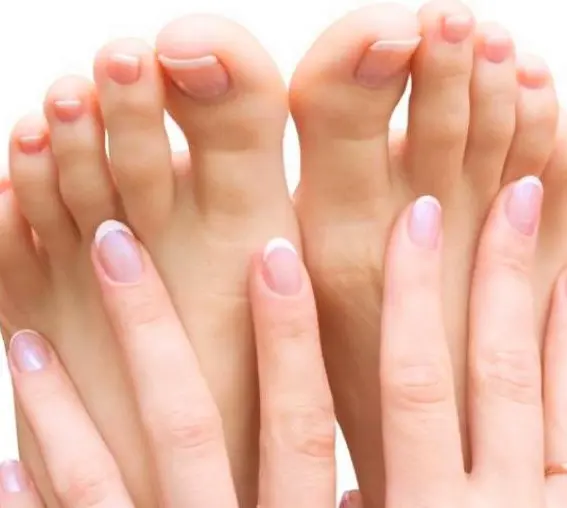How to Soften Toenails? Before knowing that you must know the causes and symptoms of this issue.
Having thick nails is an ugly condition that can affect not only the nails but also the toenails. Thick toes, if left untreated, can get worse and cause pain.
There are many possible causes of thick nails. If this is known, a person can prevent the formation of thick nails, and if it develops it can be treated quickly.
In this article, we will talk about the causes of thick toenails as well as the accompanying symptoms and treatment options regarding this.
Related Post: What is the Difference Between High vs Low Cheekbones
Overview
Fingers and toenails act as a strong barrier between the soft tissues of the nail bed beneath them and the environment beyond them.
Most people use their nails every day, for itching or for manual tasks such as removing the ids on the grill or bottle.
As a person ages, their nails may start to break, or they may develop a condition that causes thick nails to form.
Although there are many possible causes of thick nails, fungal infections in toenails are the most common cause.
Other diseases, such as rheumatism or diabetes, can also develop thick nails.
The exact cause of thick nails will help a person determine the treatment to be done to improve the condition.
Features and appearance
In the early stages, the look of a thick toe will go unnoticed. But as the nails thicken more clearly, a person notices a number of symptoms, including the following:
- Brittle, break nails
- Bad smell from the nail
- Nails are easily removed from the nail bed
- Difficult to cut or trim
- Nail splitting or cracking occurs easily
- Dirt or other debris comes under the nail
- Pain or discomfort may be felt
Also, as the toenails gradually thicken over time, they may appear sharper with some scaling on the surface.
Most often, the nails will take on a yellow, green, or brown color.
Related Post: What is Body Butter? | Types of Body Butter Vs Lotion
Causes and Risk factors
There are various reasons for nails. Many causes are related to either infection or other medical conditions associated with nail thickening.
Some of the most common causes are listed below:
Fungal and yeast infections
Primarily, fungal infections affect a person’s toes.
A type of fungal infection called onychomycosis is one of the most common causes of thick nails.
Fungal infections often grow in the toes as they thrive in hot, humid environments. They spread easily and can develop quickly, producing many of the symptoms described above.
To avoid fungal infections, people should avoid walking barefoot in public places, especially locker rooms and showers, and keeping footwear dry.
Some people are more likely to have a fungal infection than others. Some of the leading causes of fungal infections of the toenails include:
- Athlete’s foot spreads on toenail bed
- Wet constant exposure to wet areas
- Smoking
- Ric compressed footwear
- Weakened immune system
- Medical conditions, such as cirrhosis, circulatory problems, and type 1 and 2 diabetes
- Damage to the nail
Injury
Sudden or repeated trauma or injury can result in toenails. Most often, this happens to people involved in the sport or exercise, such as soccer players, runners, and dancers, but also to people with poorly fitted shoes.
Most often, thick nails due to injury are mistaken for fungal infections.
Related Post: Simple Ways to Avoid or Get Rid Of Common Causes Of Back Pain
Psoriasis
Psoriasis is an autoimmune disorder that usually forms a red, scaly lump on the skin. Nail cirrhosis often accompanies a skin disorder and affects both the finger and toenails.
While cirrhosis is a direct cause of thick nails, the person is more likely to develop stripes on the nails, and the nails may separate from the nail and the nail bed.
Yellow Nail Syndrome
This common cause of thick nails affects both nails and toenails. This condition causes the nails to turn yellow and bend and thicken.
A person with yellow nail syndrome experiences shortness of breath and swelling in the arms and legs due to fluid around the lungs and organs.
Although doctors do not know the exact cause of yellow nail syndrome, some believe there is a strong genetic association.
Paronychia
Paronychia is a skin condition that causes redness and swelling around the nail. Over time and with multiple infections, both nails and toenails can become thick. One may notice that the nail layers begin to peel.
People are more likely to have frequent sucking paronychia on their fingers, wash nails, and trim nails or cuticles more.
Many businesses also have an increased risk of developing thick nails due to paronychia. These jobs include:
- Dishwashers
- Nurses
- People who fish
- Bartenders
- Und laundry workers
- Cleaners
- Cook
Old Age
Aging can cause toenails, as well as toenails.
Most of the time, as a person ages, the nails on his toes begin to thicken. Although this condition is most common on toenails, it is also possible for toenails to become thick.
It is believed that nails get thicker as people get older because the body is not as capable of renewing itself as it was at a young age.
Thick nails and stripes formed on the nail as a result of aging are not treatable. To make them look smoother, they can be slightly boiled.
Complications
Thick nails are a symptom of another infection or disorder.
Thick nails are not likely to cause further complications, however, if left untreated, they will continue to deteriorate, causing pain and make footwear uncomfortable to wear.
Complications from pre-existing conditions that cause thick nails, however, are likely to follow. For example, thick nails can be an additional complication acquired by a person with underlying diabetes.
When to see a doctor
Underlying conditions often cause thick nails, if a person notices ringing or changing the color of their fingernails or toenails, the person should consult a doctor. Anyone with an underlying condition such as diabetes or psoriasis can already treat it.
People who experience yellow, injured nails without knowing the cause, should consult their doctor to know that it is just a fungal infection and nothing more serious to be worried about.













